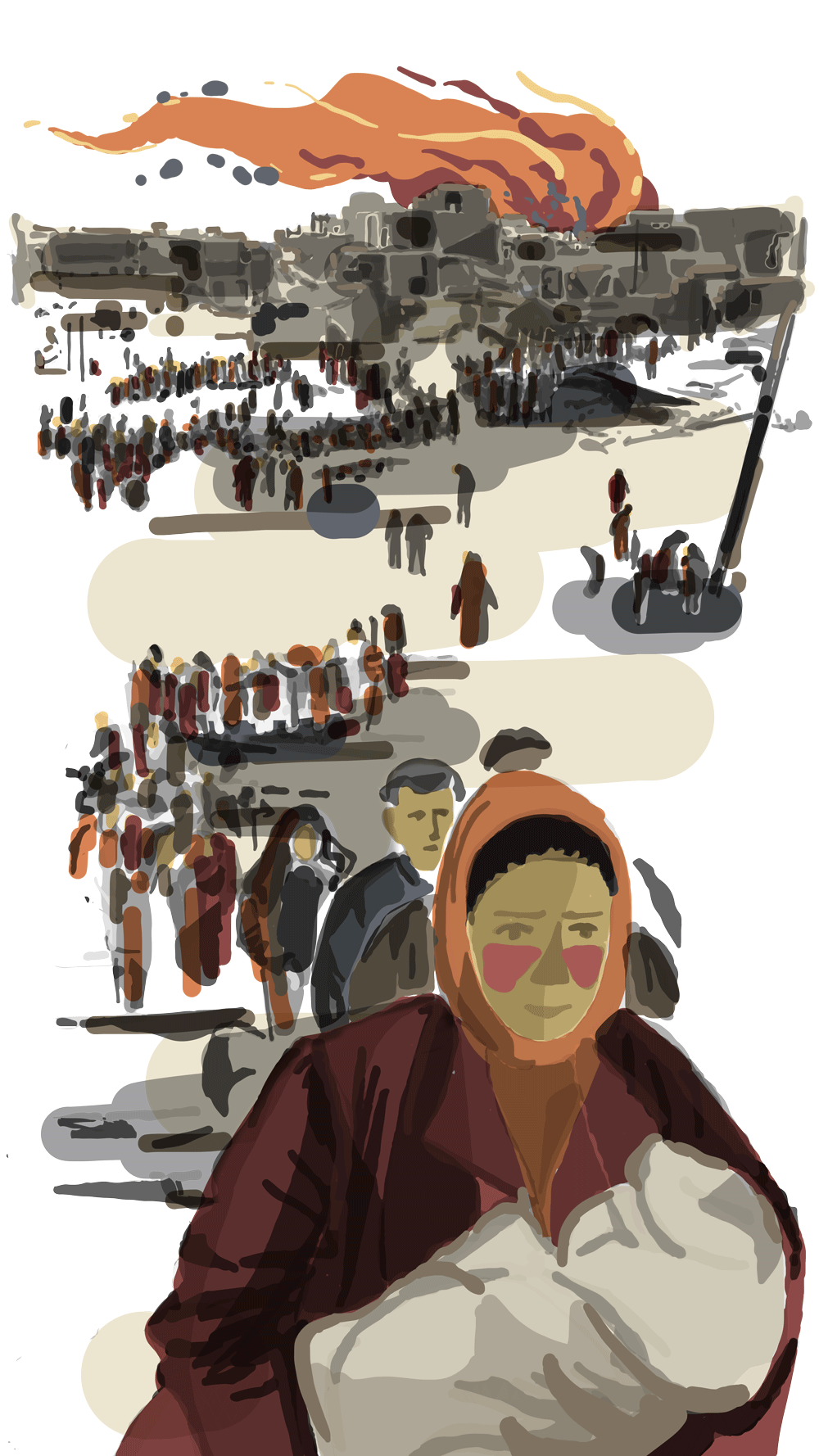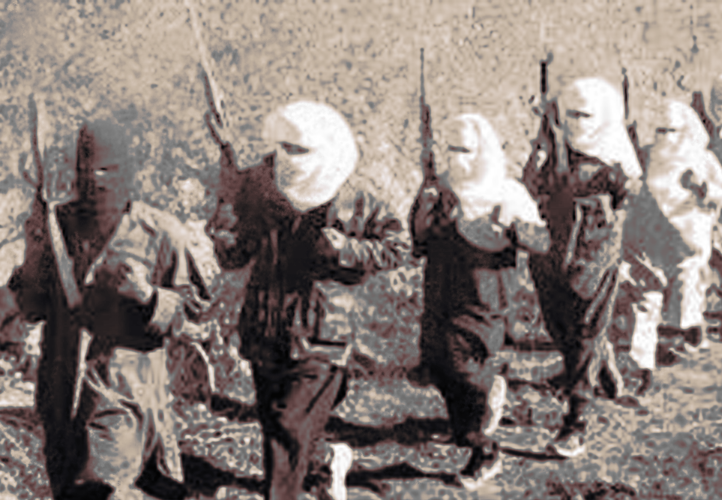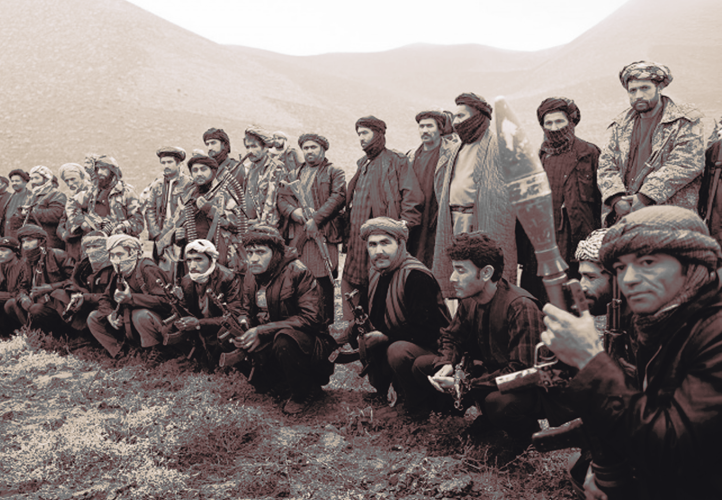

Afghanistan shares up to a thousand miles of common borders with many states of Central Asia. Those states declared independence after the dissolution of the Soviet Union, December 26, 1991, as a result of declaration number 142-Н of the Supreme Soviet of the Soviet Union. Some radical movements have since emerged in a number of these states, such as Uzbekistan, Kyrgyzstan, Tajikistan, especially in the Fergana Valley, located between these three states. These radical movements, e.g. Adolat, Islamic Movement of Uzbekistan (IMU), Junod Al-Khilafah (JaK), and Eastern Turkistan Islamic Movement (ETIM), are no less dangerous than Al-Qaeda or Daesh, as they participated in the Tajik civil war (1992-1997) and some of which tried to overthrow the Uzbek government in 1999.
The Soviet invasion of Afghanistan (1979-1989) was an appealing element for the radical movements in Central Asia, the Middle East, and the world. The political volatility and the absence of state authority due to the conflict between 21 ethnic groups – Persian in the Central region, Uzbek-Tajik in the north, and Pashtun alongside Pakistani border in the south – have led Afghanistan to become a destination for radical groups. These groups have chosen the different provinces of Afghanistan as a ‘base’ to make deals, reposition, reform, and agree on the roles played by each group in the Middle East and the world.
Along with the Afghan people themselves, the international community became threatened by the agenda of each organization. According to a report by the United Nations Office for the Coordination of Humanitarian Affairs (OCHA), the number of victims resulting from the conflict between the Afghan government and the extremist organizations in 2017 was about 10,400 civilians, of which more than 30 percent were children, as well as at least 445,000 Afghans who have become displaced.
In 2001, the Afghan geography showed how far international decision makers are aware of the danger of this expansion and positioning of the extremist organizations. This led Washington, despite the large distance between Washington and Kabul, to make a rapid and urgent move to be present in the Afghan scene after the September 11 attacks.
The conflict, at different periods, among the leaders of various Afghan ethnic groups – e.g. Burhanuddin Rabbani, Ahmad Shah Massoud (Tajik), Hekmatyar (Pashtun), Dostum (Uzbek) – led to divisions and fighting among the Afghans. As a result, extremist organizations were able to sneak through at the expense of the State igniting conflicts and causing the suffering of Afghan people day after day. (3)
In an attempt to dismantle the Afghan society, terrorism has not only attacked the lifestyle in Afghanistan, but has also deliberately hijacked the State along with its natural resources to fund the operations of these groups, and to control the violent scene in Afghanistan. Terrorism has controlled the Afghan people’s wealth, which has recently been reported to exceeded $4 trillion (2), to create a parallel economy that funds its terrorist activities and objectives, not only in Afghanistan but all over the world.
Terrorism Repositioning: Afghanistan as a Model

By threatening to reposition again inside Afghanistan, terrorist organizations have forced more than 5 million Afghan nationals to escape and live in Iran and Pakistan as refugees. According to the United Nations, 2.7 million of these refugees are not officially registered or do not have a clear legal status, not to mention 479 thousand Afghans who have become displaced. This is a desperate attempt by these organizations to kill the future of Afghanistan as it seeks to recover from the horrific conditions it experienced while under the control of these organizations and their violent way of life.
Taliban, Al-Qaeda, and Daesh attempted to forcefully create a new reality in Afghanistan that is characterized by increasing number of terrorist attacks and victims. They aim at drawing a mental image which depicts Afghanistan as a nurturing environment for extremism. This image is then utilized to threaten the international community and exert pressure towards certain strategic ends to hinder the country’s movement towards a better future. Initiating wars and conflicts with the Afghan government also threatened the lives of innocents, and fighting with competitive organizations was at the expense of the lives of millions of Afghans, who dream of a life free from the smell of gunpowder and the scenes of killing. All this is evidence that these organizations are keen to draw a mental image that would raise fear within the Afghan community to eventually have greater control over it and to take over its assets.
After years of losing land and control over Afghanistan, Taliban has emerged again by triggering chaos in Afghanistan to undermine security and create opportunities for its elements to take control and expand in many Afghan territories. Observers of the Afghan issue think that the leniency in making partial negotiations with Taliban by local officials motivated Taliban to achieve bigger ambitions, especially with the release during the last two years of thousands of its elements who resumed the practice of terrorizing the community. This leniency gave Taliban various options of financial support platforms through exploiting the resources of the regions it controls enabling it to serve its activities and fund its operations.
After having the largest influence in Afghanistan, Al-Qaeda has lost ground and retreated to the defensive position, allowing Taliban to take the lead of the violent scene. Parallel to this, Daesh was trying to have a new foothold and transform Afghanistan into a platform for its elements to regather after the repeated strikes on Daesh in Iraq and Syria, as well as winning its share of the resources of Afghanistan. This triggered a long violent war between the two organizations since 2015, aiming to take control over the country and transform it into a platform to launch large-scale terrorist operations worldwide.

The ongoing conflict between Taliban and Daesh in Afghanistan is not primarily aimed to achieve what their slogans appeal for. It is rather a strategic conflict about who, through its power, is capable of acquiring the natural resources of Afghan people which have been discovered recently and are worth more than 4 trillion dollars, according to international economic reports. Both extremist organizations aim to have financial abundance enabling each of them to achieve its goals.
This analysis, which agrees with a study by the Combating Extremism Center at West Point, has revealed that terrorist organizations in Afghanistan target the economy of mining. By controlling the resourceful areas in this poor country, they seek to establish what can be described as the ‘bank of terrorism’ to support their criminal operations.
Several months ago, it was difficult to compare between Taliban and Daesh inside Afghanistan. Today, however, the map of power is changing for the benefit of Taliban which has almost full control due to the dispatch of its armored fighting vehicles taking over territories belonging to Daesh and Al-Qaeda. A number of important factors helped Taliban accomplish this. For example, its success in recruiting more soldiers, especially in rural and remote areas. Also, pursuing an offensive method against Daesh by using local national concepts to achieve its goal in taking over the Afghan scene. In addition to its ability in providing safe havens for its elements and investing its accumulated credit of extremism inside of Afghanistan, which in return allows for more recruiting of new local members.
Yet, this does not mean the two organizations have no common features. People who suffered from these organizations can clearly and with pain see many of these features. Both seek to expand their spheres of influence and control new territories, work on coming back to the forefront of the scene, have the same problem with other ideologies, doctrines and political views.
In addition, both of them take responsibility for a series of terrorist attacks against civilian and military targets (e.g. Afghan military and police training centers), in order to control new lands and, therefore, take over what is left of Afghanistan. The intention of these terrorist organizations is not only to disrupt life in the areas under their control, but also to exploit all the resources to fund their terrorist projects.
Since 2009, Taliban has been working on creating new sources of revenue to earn millions of dollars and help in increasing its terrorist activities and expanding the areas of its terrorist operations.
This is a list of the most important sources on which Taliban depends in funding its operations:

Afghanistan has been known historically as one of the world's most important geographic corridors. But it has become, since nearly three decades, a meeting point for migrant elements of terrorist groups and organizations which have engulfed Afghanistan's security and turned it into the most vulnerable country in Asia and the world. Here are the most prominent death dealers in Afghanistan throughout its bloody history:
Haqqani Network:
Its first appearance was in 1996, and it reappeared in 2011. The network is active in Afghanistan and Pakistan, and is based in Miramshah. The count of its elements reached 10,000. Jalaluddin Haqqani is its founder and Sirajuddin Haqqani is its leader.
Haqqani Network:
Its first appearance was in 1996, and it reappeared in 2011. The network is active in Afghanistan and Pakistan, and is based in Miramshah. The count of its elements reached 10,000. Jalaluddin Haqqani is its founder and Sirajuddin Haqqani is its leader.
Taliban:
Its first appearance was in 1994, and it is based in the south and west of Afghanistan. Its elements are estimated at thousands. Mullah Mohammad Omar is its founder, and Mullah Hibatullah Akhundzada is its current leader.




Daesh in Afghanistan (Wilayat Khorasan):
Its first appearance was in 2015, and it is active in Nangarhar Province. Abu Bakr Al-Bagdadi is its founder, and the count of its elements is around 1,300. After the death of Hafiz Saeed Khan, its current leader has not been officially announced.
Al-Qaeda:
Its first appearance was in 1988. Its activities started in Afghanistan, Pakistan and other areas around the world. The number of its elements is unspecified. Osama bin Laden is its founder and its current leader is Ayman Al-Zawahiri.
Daesh in Afghanistan (Wilayat Khorasan):
Its first appearance was in 2015, and it is active in Nangarhar Province. Abu Bakr Al-Bagdadi is its founder, and the count of its elements is around 1,300. After the death of Hafiz Saeed Khan, its current leader has not been officially announced.




Afghanistan is classified as one of the countries with the highest rate of female suicide. This is because of the strict policies that have dominated since the beginning of the civil war, as well as the spread of terrorism and extremism. Afghan women suffered as a result of extremist groups gaining authority in the mid-nineties. These are the most important milestones in Afghan women history:
1921
First school for girls in Afghanistan, named ‘Masturat’ (which means decently dressed women), was opened.
1920-1960
The Afghan constitution granted women the right to vote and equality.
1923
A law was issued granting Afghan women the right to stand for election.
1928
First Afghan women group joined schools in Europe, and Adeena Niazi was the first Afghan woman to study abroad.
1940 -1950
Women became nurses, doctors, and teachers.
1959-1965
Women studied at university, and joined the labor force and civil service in large numbers.
1963
Women graduated from the Faculties of Medicine and Law at Kabul University.
1960-1970
About 8 percent of females in Afghanistan received independent income through government jobs in health, education, police, army, airline, textile and ceramics factories, food processing, etc.
1966-1971
14 females were appointed as judges in Islamic jurisprudence courts.
1989
Civil war broke out in Afghanistan, marking the end of Afghan women’s rights era.
There was a clampdown on women’s rights in the form of a number of fundamentally unjust decisions, such as:
Allowing marriage of minors, Preventing girls education, Preventing women from working, and Preventing women from leaving home unless escorted by a male family member.
Afghan women are now exposed to:
Physical violence, sexual harassment, lack of economic support, trafficking, murder, rape, and public flogging.




Afghanistan is classified as one of the countries with the highest rate of female suicide. This is because of the strict policies that have dominated since the beginning of the civil war, as well as the spread of terrorism and extremism. Afghan women suffered as a result of extremist groups gaining authority in the mid-nineties. These are the most important milestones in Afghan women history:
The 2017 Global Terrorist Index has revealed that Afghanistan ranks second, after Iraq, in the world’s largest death rate as a result of terrorist operations.
According to the Index, Iraq, Afghanistan, Pakistan and Syria accounted for three-quarters of the global deaths due to terrorism. Despite the large number of victims of terrorism in Afghanistan in 2017, the index has recorded a decline in the number of victims compared to 2016, which amounted to 14 percent.
When it comes to the trending terrorist groups, Taliban comes third, after Daesh and Boko Haram.
In comparison to Al-Qaeda, Taliban is responsible for 59 percent of the deaths due to terrorist acts in 2016 and 2017.
Between 2016 and 2017, the number of civilians who fell victim to Taliban in Afghanistan has declined by 21 percent. On the other hand, the number of military personnel victims of its terrorist operations has increased after a change in its strategy to put more pressure on state officials, military personnel and the police to achieve geographical expansion.
With regard to Al-Qaeda in Afghanistan, the number of victims killed by the organization’s activity has declined by 35 percent due to a fierce leadership struggle taking place at present between Hamza bin Laden and Ayman Al-Zawahiri.
75% of the deaths caused by terrorism take place in these countries

Taliban (plural of talib which means ‘student’ in Pashto language) declared its establishment. It was originally formed of religious students, and was based in Kandahar Province, south of Afghanistan.

Taliban controlled the capital Kabul, establishing the so-called ‘Islamic Emirate of Afghanistan’. The movement previously controlled about 50 percent of Afghan territories, excluding the northeastern part.

Al-Qaeda turned the Afghan territories to a logistic platform for launching its terrorist operations all over the world. Also, it created training camps in the Afghan mountains for extremists, who have come to be known as ‘Afghan Arabs’.

Taliban refused to hand over Osama bin Laden or expel Al-Qaeda from the Afghan territories after 9/11 attacks. In the same year, it was defeated by the international coalition, and most of its prominent leaders, such as Mullah Mohammad Omar, fled across the Afghan-Pakistani border. Then, the rule of Taliban in Afghanistan came to an end.

Taliban moved to the forefront of the scene after kidnapping 21 South Koreans, most of them were women, to exert pressure on the local government to release prisoners affiliated with the movement. This was considered to be the largest kidnapping operation since the fall of Taliban in 2001. A year later, the Afghan president Hamid Karzai survived an assassination attempt perpetrated by terrorist organizations, among them Taliban.

Taliban expanded from rural areas and took over many regions in southern Afghanistan. In the same year, Taliban failed to disrupt the second presidential election after thwarting its planned attacks against polling stations.

Daesh emerged in the southern and eastern provinces, Kabul and Jalalabad. In the same year, Taliban splinter groups (Liwa Al- Tawheed, Ansar Al- Khilafa, Al- Jihad, and Jund Allah) have pledged allegiance to Daesh. The organization had control over regions in eastern Afghanistan under the name of ‘Wilayat Khorasan’.
Day by day, terrorist movements and organizations are tightening their grip on important regions inside Afghanistan. Reportedly, more than half of Afghanistan’s population are either living in areas controlled by such organizations or are exposed to their destructive terrorism. The following are the most prominent regions which suffer the most from terrorist activities: